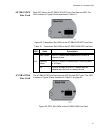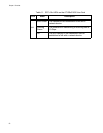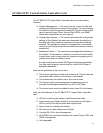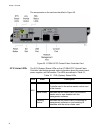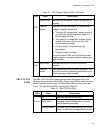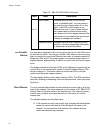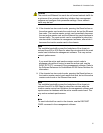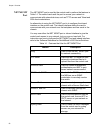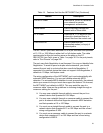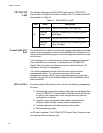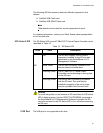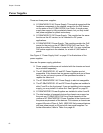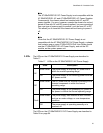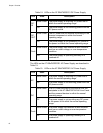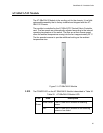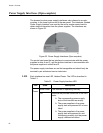
SwitchBlade x3112 Installation Guide
59
The NET MGMT port has a standard RJ-45 8-pin connector and operates
at 10, 100, or 1000 Mbps in either half- or full-duplex mode. The cable
requirements for this port are the same as the ports on the AT-
SBx31GT24 Line Card, given in Table 1 on page 36. For the port pinouts,
refer to “Port Pinouts” on page 220.
The port uses Auto-Negotiation to set its speed. You may not disable Auto-
Negotiation. To avoid a speed or duplex mode mismatch, you should
connect the port only to a device that also uses Auto-Negotiation. If
connected to a network device that does not support Auto-Negotiation, it
defaults to 10 Mbps, half-duplex mode.
The wiring configuration of the NET MGMT port is set automatically with
automatic MDIX detection. You may not disable automatic MDIX
detection. For automatic MDIX detection to work successfully, the network
device you connect to the port must also support the feature. If it does not,
the NET MGMT port defaults to MDIX. This may entail the use of a
crossover cable. Here are the guidelines to choosing straight-through or
crossover cabling for the port:
You may use a straight-through cable to connect the port to a
network device that operates at 1000 Mbps.
You may use a straight-through or crossover cable to connect the
port to a network device that supports automatic MDIX detection
and that operates at 10 or 100 Mbps.
You must use a straight-through cable to connect the port to a
network device that operates at 10 or 100 Mbps and has a fixed
wiring configuration of MDI.
You must use a crossover cable to connect the port to a network
device that operates at 10 or 100 Mbps and has a fixed wiring
configuration of MDIX.
TACACS+ client Used with a TACACS+ server on
your network for remote
management authentication.
Telnet server Used to remotely manage the
chassis with a Telnet client.
TFTP client Used with a TFTP server on your
network to download files to or
upload files from the control card.
TRACEROUTE Used to determine the
intermediate nodes (or hops) of
network paths.
Table 14. Features that Use the NET MGMT Port (Continued)
Feature Description



